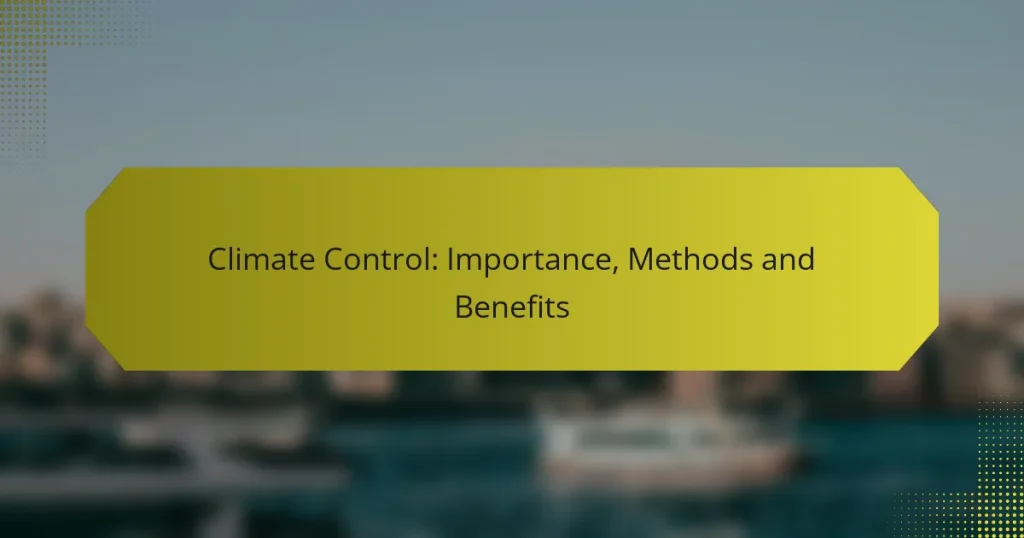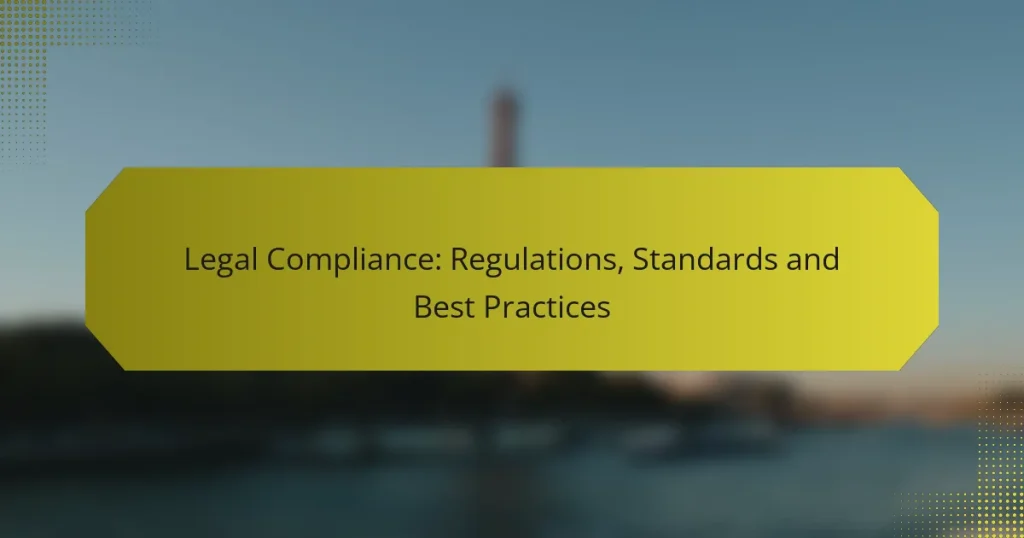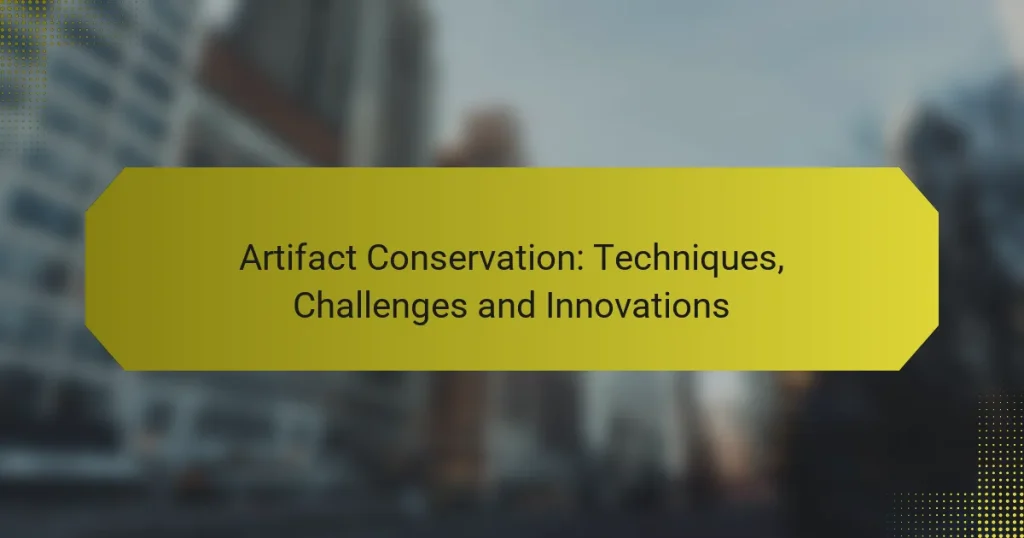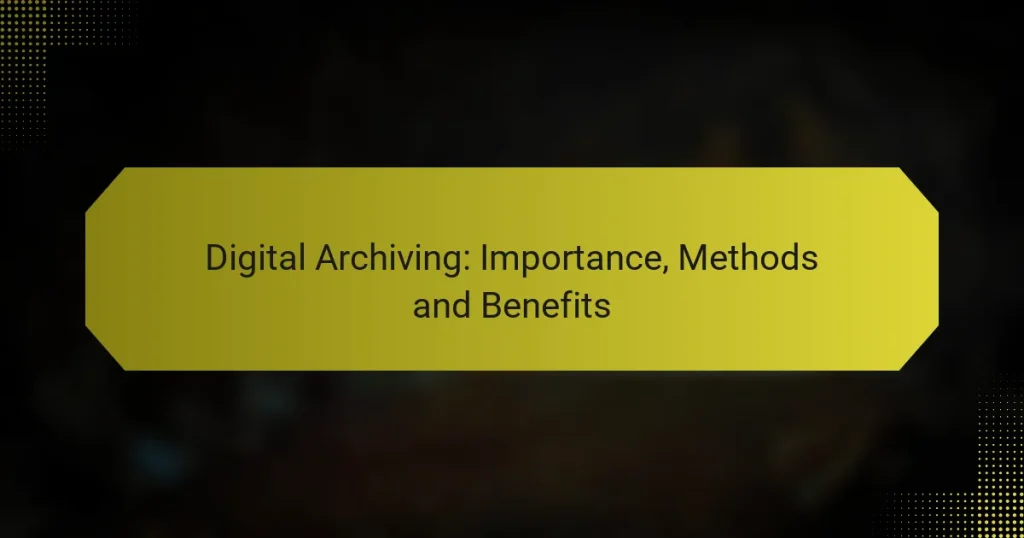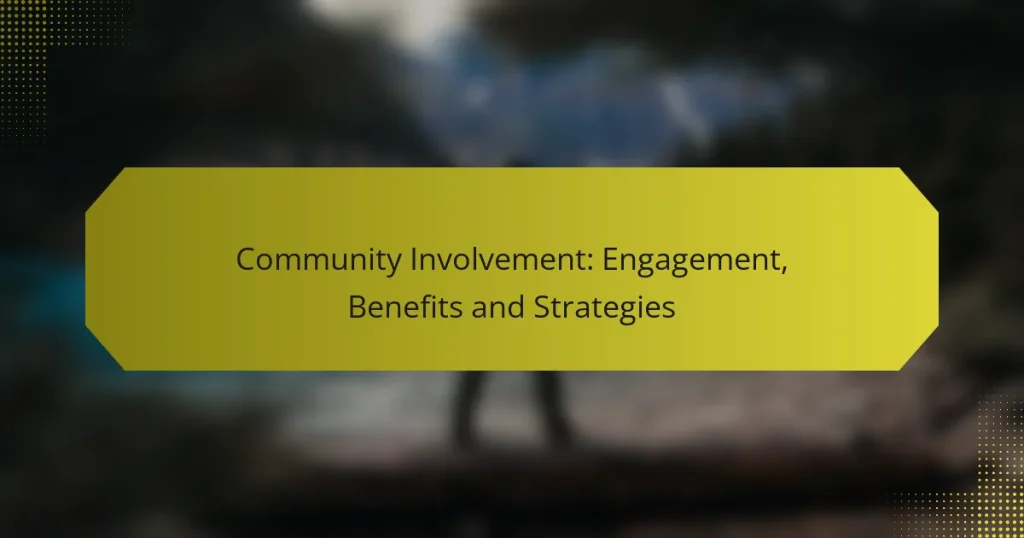World Heritage museums play a crucial role in safeguarding cultural heritage through diverse conservation practices. These efforts encompass preventive measures, restoration techniques, and sustainability initiatives aimed at minimizing environmental impact. However, challenges such as funding constraints and climate change pose significant threats to the preservation of invaluable artifacts.
Conservation Techniques: Comparison, Effectiveness and Applications
Legal Compliance: Regulations, Standards and Best Practices
Funding Impact: Conservation Quality, Sustainability and Growth
Artifact Conservation: Techniques, Challenges and Innovations
Digital Archiving: Importance, Methods and Benefits
Community Involvement: Engagement, Benefits and Strategies
What conservation practices are implemented in World Heritage museums?
World Heritage museums employ a variety of conservation practices to protect and preserve their collections. These practices include preventive conservation, restoration and repair, environmental monitoring, staff training, and community engagement initiatives.
Preventive conservation techniques
Preventive conservation techniques focus on minimizing risks to collections before damage occurs. This includes controlling environmental factors such as temperature, humidity, and light exposure, which can significantly affect artifacts over time.
Common methods include using archival-quality materials for storage, implementing proper display techniques, and conducting regular condition assessments. Museums often establish guidelines for handling and transporting items to prevent physical damage.
Restoration and repair methods
Restoration and repair methods are applied when artifacts are damaged and require intervention. These processes aim to return items to a stable condition while maintaining their historical integrity.
Techniques may involve cleaning, reassembling fragments, or replacing missing parts with compatible materials. It is crucial to document all restoration work to maintain a clear record of changes made to the artifact.
Environmental monitoring systems
Environmental monitoring systems are essential for tracking conditions that could harm collections. These systems often include sensors that measure temperature, humidity, and light levels within museum spaces.
Data collected from these systems helps curators make informed decisions about display and storage conditions. Regular analysis of this data can prevent potential damage from environmental fluctuations.
Training programs for staff
Training programs for staff are vital in ensuring that all personnel understand conservation practices. These programs cover topics such as handling techniques, emergency response, and the importance of environmental controls.
Regular workshops and seminars help staff stay updated on best practices and new technologies in conservation. Engaging staff in these programs fosters a culture of preservation within the museum.
Community engagement initiatives
Community engagement initiatives involve the public in conservation efforts, raising awareness about the importance of preserving cultural heritage. Museums often host workshops, lectures, and volunteer opportunities that encourage community participation.
These initiatives can help build support for conservation projects and foster a sense of ownership among local communities. Collaborating with schools and local organizations can further enhance outreach and education efforts.
How do World Heritage museums ensure sustainability?
World Heritage museums implement sustainability through various practices that reduce their environmental impact while preserving cultural heritage. These practices include energy-efficient technologies, water conservation methods, and effective recycling and waste management systems.
Energy-efficient lighting solutions
Energy-efficient lighting is crucial for reducing electricity consumption in museums. Many institutions opt for LED lighting, which can use up to 75% less energy than traditional incandescent bulbs and last significantly longer. This not only lowers energy costs but also minimizes heat output, protecting sensitive artifacts.
When selecting lighting, museums should consider the color rendering index (CRI) to ensure that artworks are displayed accurately. Additionally, implementing motion sensors and timers can further enhance energy savings by ensuring lights are only on when needed.
Water conservation strategies
Water conservation is essential for museums, especially in regions where water scarcity is a concern. Museums can install low-flow fixtures in restrooms and kitchens to reduce water usage significantly. Rainwater harvesting systems can also be beneficial, allowing institutions to collect and use rainwater for landscaping and non-potable applications.
Regular maintenance of plumbing systems is vital to prevent leaks, which can waste substantial amounts of water. Museums should also educate staff and visitors about the importance of water conservation to foster a culture of sustainability.
Recycling and waste management practices
Effective recycling and waste management practices help museums minimize their environmental footprint. Implementing a comprehensive recycling program can ensure that paper, plastics, and metals are properly sorted and processed. Museums should provide clearly labeled bins to encourage proper disposal among visitors and staff.
Additionally, reducing single-use items and opting for reusable materials can significantly decrease waste generation. Regular audits of waste management practices can help identify areas for improvement and ensure compliance with local regulations regarding waste disposal.
What are the challenges faced in conservation efforts?
Conservation efforts in World Heritage Museums face several significant challenges that can hinder the preservation of cultural and historical artifacts. Key issues include funding limitations, climate change impacts, and visitor management problems, each requiring targeted strategies to address effectively.
Funding limitations
Funding limitations are a critical challenge for conservation efforts, as many museums operate on tight budgets. Insufficient financial resources can restrict the ability to hire skilled conservators, purchase necessary materials, or implement advanced preservation technologies.
To mitigate funding issues, museums can explore various avenues such as grants from government bodies, partnerships with private organizations, and fundraising campaigns. Establishing a clear budget and prioritizing essential conservation projects can also help allocate limited resources more effectively.
Climate change impacts
Climate change poses a significant threat to the integrity of artifacts in World Heritage Museums. Rising temperatures and humidity levels can accelerate deterioration, while extreme weather events may damage buildings and collections.
Museums can adopt climate control measures, such as improved HVAC systems and humidity monitoring, to protect their collections. Additionally, developing disaster preparedness plans can help museums respond effectively to climate-related incidents, ensuring the safety of both artifacts and visitors.
Visitor management issues
Visitor management issues can complicate conservation efforts, as high foot traffic may lead to wear and tear on exhibits. Ensuring that visitors engage with artifacts without causing damage is a delicate balance that museums must maintain.
Implementing strategies such as timed entry tickets, guided tours, and clear signage can help manage visitor flow and minimize potential harm to collections. Educating visitors about the importance of conservation and encouraging respectful behavior can further enhance the preservation of museum artifacts.
What role do technology and innovation play in conservation?
Technology and innovation are crucial in enhancing conservation practices in World Heritage museums. They enable more effective preservation methods, improve documentation accuracy, and facilitate remote monitoring of artifacts.
Digital documentation tools
Digital documentation tools streamline the process of recording and managing information about artifacts. These tools can include databases, imaging software, and mobile applications that help catalog items and track their condition over time.
Using digital documentation, museums can ensure that information is easily accessible and can be updated in real-time. This reduces the risk of data loss and allows for better collaboration among conservation teams.
3D scanning and modeling
3D scanning and modeling technologies create detailed digital replicas of artifacts, allowing for precise analysis and virtual preservation. These models can be used for restoration planning and can help in visualizing how an object may have originally appeared.
Additionally, 3D models can be shared with researchers and the public, enhancing educational outreach without risking damage to the original items. This technology is particularly valuable for fragile or irreplaceable objects.
Remote monitoring technologies
Remote monitoring technologies enable museums to track environmental conditions affecting artifacts, such as temperature, humidity, and light exposure. Sensors can provide real-time data, allowing for immediate action if conditions become detrimental.
Implementing these technologies can significantly reduce the risk of deterioration. Museums should consider integrating remote monitoring systems into their conservation strategies to maintain optimal preservation environments.
How can museums collaborate for better conservation outcomes?
Museums can achieve better conservation outcomes through collaboration by sharing resources, expertise, and best practices. Joint initiatives can enhance the preservation of artifacts and improve overall sustainability in conservation efforts.
Sharing Resources and Expertise
Collaboration allows museums to pool their resources, which can lead to cost savings and improved access to specialized tools and technologies. For instance, a group of museums might invest in a shared climate control system that benefits all participants by maintaining optimal conditions for their collections.
Additionally, museums can exchange knowledge and training programs, enabling staff to learn from each other’s experiences. This can include workshops on conservation techniques or joint research projects that enhance understanding of preservation methods.
Joint Conservation Projects
Engaging in joint conservation projects can significantly amplify the impact of individual museum efforts. By working together, museums can tackle larger-scale preservation challenges, such as restoring a shared historical site or collaborating on a traveling exhibition that highlights conservation success stories.
Such projects often attract funding from governmental and non-governmental organizations, providing financial support that individual institutions may struggle to secure alone. This collaboration can also foster community engagement and raise awareness about the importance of conservation.
Networking and Partnerships
Establishing networks and partnerships with other cultural institutions, universities, and conservation organizations can enhance conservation practices. These relationships can facilitate access to new research, innovative techniques, and potential funding sources.
For example, a museum might partner with a local university to conduct research on the effects of environmental factors on artifacts, leading to improved conservation strategies. Networking also provides opportunities for museums to participate in conferences and share their findings with a broader audience.
